Services
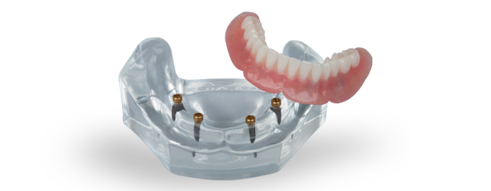
Locator® Implant Overdentures are fabricated using freestanding Locator Attachments, which are utilized to provide retention and stability in this primarily tissue-borne restoration.
Locator Implant Overdenture is indicated when there is an adequate ridge and the prosthesis will be primarily tissue-borne with the implants providing retention and there are at least four implants in place. Locator implant overdentures are most common in the mandible. .

Screw-Retained Dentures offer a fixed implant solution for edentulous patients desiring a stable and esthetic replacement for removable prostheses. Featuring a custom titanium framework produced using state-of-theart CAD/CAM technology, Screw-Retained Dentures improve chewing and speech function.
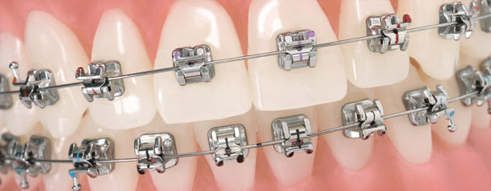
Dental braces (also know as orthodontic braces, or braces) are devices used in orthodontics that align and straighten teeth and help to position them with regard to a person's bite, while also working to improve dental health. They are often used to correct underbites, as well as malocclusions, overbites, cross bites, open bites, deep bites, crooked teeth, and various other flaws of the teeth and jaw.
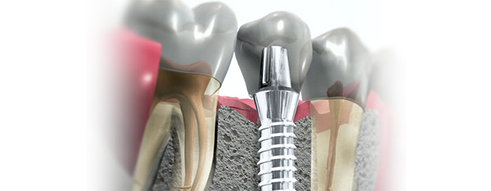
A dental implant is a "root" device, usually made of titanium, used in dentistry to support restorations that resemble a tooth or group of teeth to replace missing teeth.
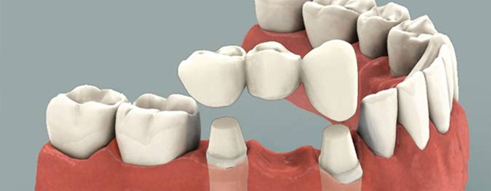
Dental porelain (also know as dental ceramic) is a porcelain used by a dental technician to create biocompatible lifelike crowns, bridges, and veneers for the patient. Evidence suggests they are effective (they are biocompatible, esthetic, insoluble and have hardness of 7 on the Mohs scale), although for the three-unit molars porcelain fused to metal or in complete porcelain group only zirconia-based restorations are recommended.
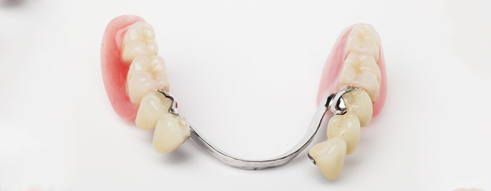
Removable restorations are dental appliances to replace one o more teeth that have been completely lost. These restorations ideally remain stable in normal function but can be removed by the patient soft tissue as in full dentures, suported by other teeth as with partial dentures and overdentures or on implant attachments as with implant retained overdentures and partial dentures.
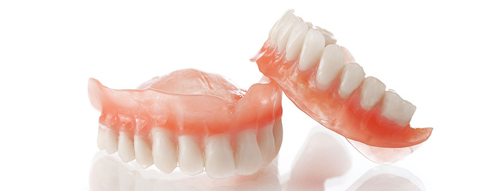
Dentures, also know as false teeth, are prosthetic devices constructed to replace missing teeth; they are sopported by surrounding soft and hard tissue of the oral cavity. Convetional dentures are removable. However, they are many diferent denture designs, some which rely on bonding or clasping onto teeth or dental implants.
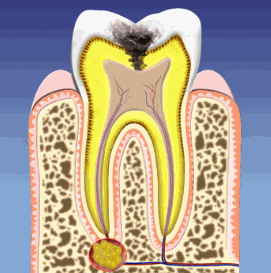
A root canal is the space within the root of a tooth. Part of a naturally occurring space within a tooth, it consist of the pulp chamber (within the coronal part of the tooth), the main canal(s), and more intricate anatomical braches that may connect the root canals to each other or the surface of the root.

A post and core is a type of dental restorations that us utilized when there is a inadequate tooth structure remaining to support a traditional restoration. A small rod, usually metal, is inserted into the root space of the tooth and protrudes from the root a coyple of millimeters. This rod is referred to as a post. The post is then used to hold a filling, or core, in place. Without this post there would not have been enought tooth structure remaining to hold the filling required. Often times, the post and core is covered with a crown, however it does not need a crown to function.
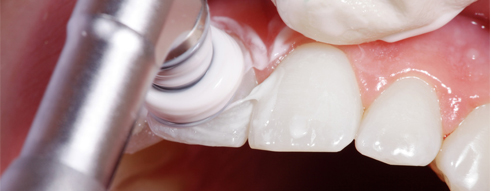
Teeth cleaning (also know as prophylaxis, literally a preventative treatment of a disease) is procedure for the removal or tartar (miniralized plaque) that may develop even with careful brushing and flossing, especially in areas that are difficult to reach in routine tooth scaling and tooth polishing and debridement if too much tartar has accumulated. This involves the use of various instruments or devices to loosen and remove deposits from the teeth.
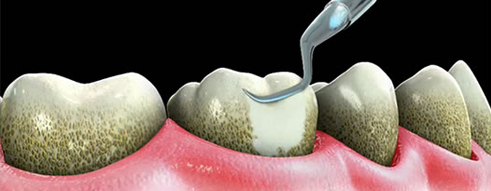
Curettage has been used to treat teeth affected by periodontistis. Gingival curetage is a surgical procedure designed to remove the soft tissue lining of the periodontal pocket with a curet, leaving only a gingival connective tissue lining. Gingival curettage, as originally conceived, was designed to promote new conective tissue atachment to the tooth, by the removal of pocket lining and junctional epithelium.
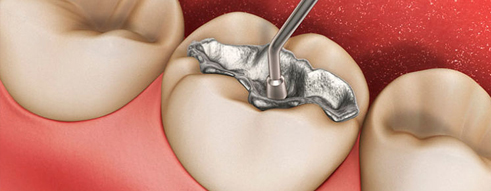
A dental restoration or dental filling is a dental restorative material used to restore the function, integrity and morphology of missing tooth structure. The structural loss typically result from caries or external trauma. It is also lost intentionally during tooth preparation to improve the aesthetics or the physical integrity of the intended restorative material. Dental restoration also refers to the replacement of missing tooth structure that is supported by dental implants.
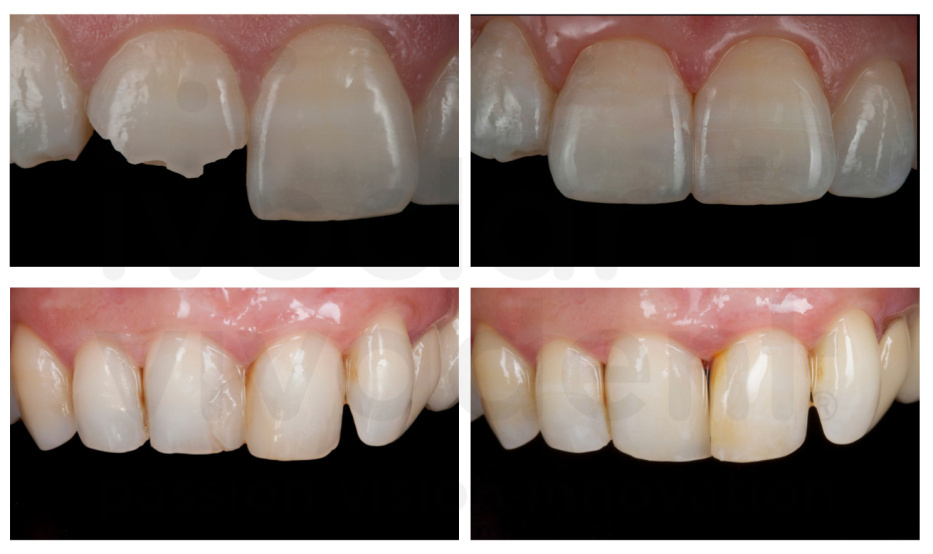
Dental composites resins are types of synthetic resins which are used in dentistry as restorive material or adhesives. Unlike amalgam which essentially just fills a hole and requires retention features to hold the filling, composites cavity restorations when used with dentin and enamel bonding techniques restore the tooth back to near its original physical integrity.
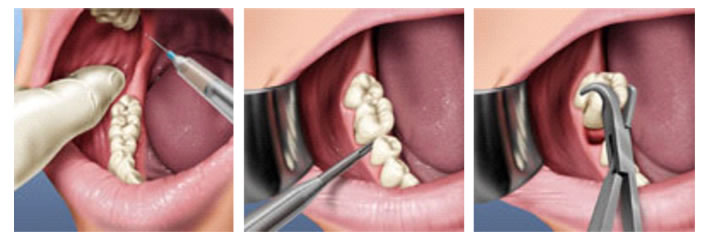
A dental extraction (also referred to as exodontia) is the removal of a tooth from the mouth. Extractions are performed for a wide variety of reasons, including tooth decay that has destroyed enought tooth structure to render the tooth non-restorable. Extractions of impacted or problematic wisdom theet are routinely performed, as are extractions of some permanent teeth to make space for orthodontic treatment.
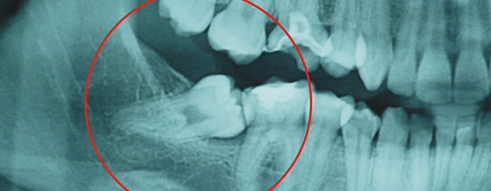
Wisdom teeth are extracted fot two general reasons: either the wisdom teeth have already become impacted, or the wisdom teeth could potentially become problematic if not extracted. Other reasons wisdom teeth are removed include misalignment which rubs up against the tongue or cheeck causing pain.

A crown is a type of dental restorations which completely caps or encircles a tooth or dental implant. Crowns are often needed when a large cavity threatens the ongoing health of a tooth. They are typically bonded to the tooth using a dental cement.
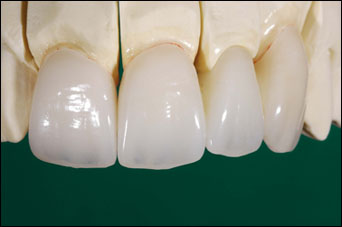
Metal-free crowns are used to stregthen and improve the shape, size or color of a teeth.
They can restore or replace broken or weak teeth or those, with large filling; provide a smooth, strong, attractive replacement for stained, misshapen or other wise abnormal teeth. They allso utilized for the restoration of implant based crowns and bridges.
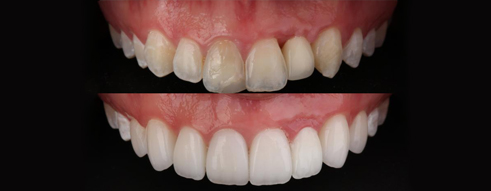
Dental Makeovers change the look, feel and function of the entire smile. Cosmetic and implant dentist can use Dental Veneers, crowns, bridges and implants individually or in combination to achieve a completely new confident smile.
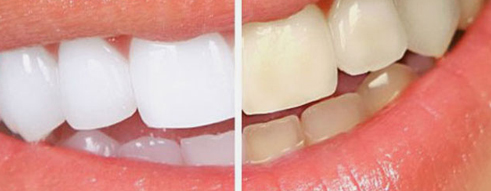
Dental bleaching, also know as tooth whitening is a common procedure in general dentistry. According to the FDA, whitening restores natural tooth color and bleaching whitens beyond the natural color. There are many methods available, such as brushing, bleaching strips, bleaching pen, bleaching gel and laser bleaching
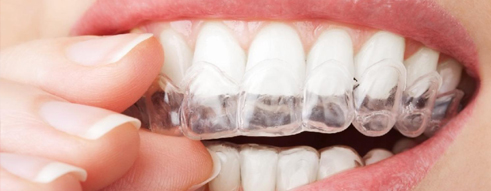
A mouthguard is a protective device for the mouth that covers the teeth and gums to prevent and reduce injury to the theet, arches, lips and gums. A mouth-guard is most often used to prevent injury in contact sport, as a treatment for bruxism or TMD (temporomandibular joint dysfunction) or as part of certain dental procedures, such as tooth belaching.

Pediactric dentistry.
